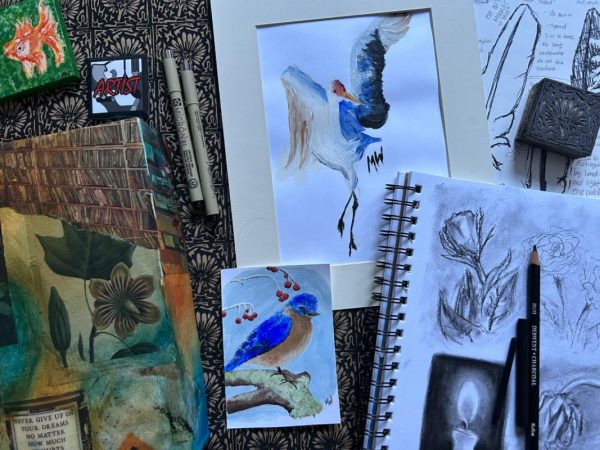A Guide to Art School Applications
What you need to know to apply for art school
The next time you walk down the street or scroll through social media, notice the art that is everywhere. Although success in pursuing an art career seems to be a one-in-a-million chance, art is needed in all areas of life. The demand for talented artists range from companies’ advertisements to a presidential campaign manager.
“I think that’s the misconception with a lot of people, especially my mother. She always thought I was going to be a starving artist,” art teacher Rachel Michaud said.
The daunting monster of art portfolios may be creeping up soon, but the most vital aspect of the application is taking it step by step.
There are many requirements to think about when creating the portfolio. Most schools require 15 pieces of the best art that best represents the artist. Remember that these pieces are going to a college, so they must be neat and appear professional.
“Reach out to alumni and current students. Reach out to advisors and inquire about portfolio reviews,” Nikki Hahn, class of 2022 alumna and current student at The Savannah College of Art and Design, advised. Every student is different, which means finding the school that is a perfect fit for you is essential. Although all the brilliant art schools out there may be intimidating, research and asking for help can be your best friend.
“It’s super different from other art schools in that they don’t require a portfolio for admissions,” Hahn said. The admission requirements often depend on the school you are applying to.
“Some schools want a portfolio, some require a sketchbook, some want a cover video,” Hahn said. This is a big reason why you should become familiar with the schools you plan to apply to.
“Don’t let yourself slack off just because you’re going to a non-traditional college,” Hahn advised. Although grades may not be the most vital part of your application, they are still important. When applying to any school, you want to stand out. Strong grades along with your breathtaking art can do this, especially when it comes to scholarships.
Art school doesn’t just consist of visual arts, it also includes vocalist, instrumentalist, and actors. Instead of a portfolio of your best pieces of visual art, you submit a series of video auditions that portray your talents,
whether that be through an instrument or through your voice.
Just like with visual art, the most vital aspect for your auditions is picking the “pieces that will suit you, pieces that you actually enjoy” according to ELHS student vocalist and senior Rohan Purohit. But, you must also meet the requirements of each school.
“The college will provide a set of requirements and you have to pick pieces that meet the requirements,” Purohit said. “For a band instrument, your technique, posture, those kinds of aspects need to be good,” Purohit advised. For Purohit, however, as a vocalist, he has to “put himself in that role.”
Along with your musical talents you are also required to give your musical background. The colleges want to know “certain musical aspects of your life you have to provide” like musical teacher recommendations, according to Purohit. The live auditions are what really makes or breaks your chances of getting into the school.
Your donation will support the student journalists of East Lyme High School. Your contribution will allow us to purchase equipment and cover our annual website hosting costs.

